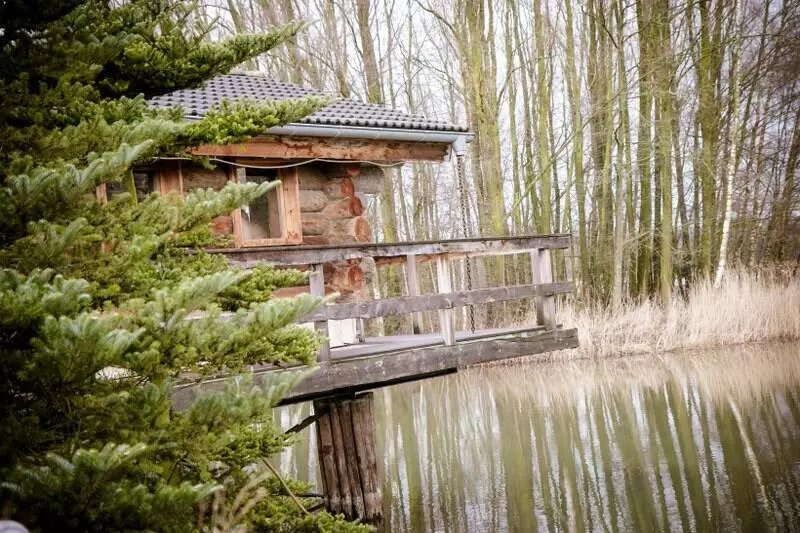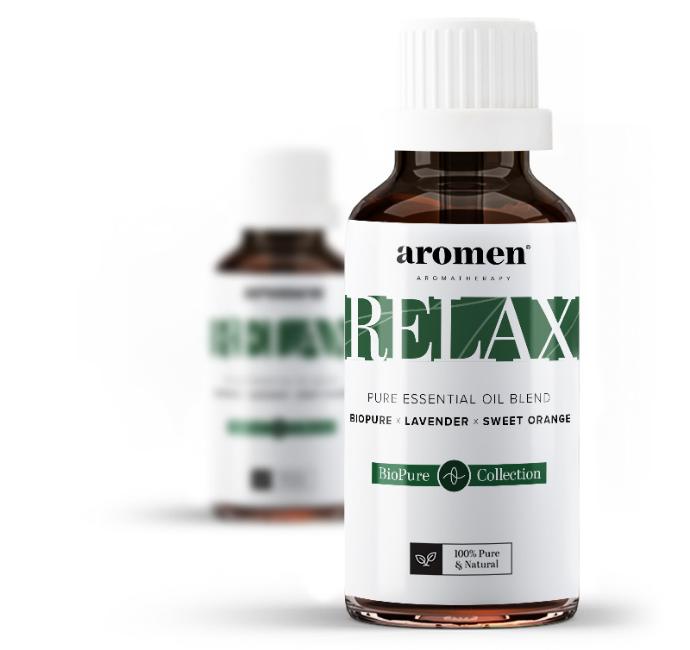Aromatherapy has a fundamental function in wellness resorts. The purifying and aromatic fragrances offer a unique influence on physical and mental health.
Scent and well-being have gone hand in hand for centuries. For instance, several societies and tribes noticed the healing powers of lavender and started placing little bags of dried flowers under their pillows to stimulate a good night’s sleep (1). In India, essential oils were used in the 3000-year-old traditional health science “Ayur Veda”. Evidence has also been found of the use of herbs in Ancient Egypt, where they’ve benefited from the qualities of essential oils since 4,500 BC (2, 3, 4).
Knowledge of the various biological effects that essential oils and herbs have on the body and mind has been passed from generation to generation orally, despite the lack of scientific evidence (5). Today, research has been able to explain most of the underlying mechanisms.
The term aromatherapy
According to Posadzki, Alotaibi, and Ernst (2012), aromatherapy can be defined as “the controlled use of plant extracts for therapeutic purposes (6).”
The title ‘aromatherapy’ was first coined by the French chemist and perfumer Gattefossé in his book published in 1937 (3, 7) when it gained popularity in France in 1920. The name itself is derived from the aroma which means “fragrance” and therapy which means “treatment” (4).
Today, aromatherapy is applied in different ways in different settings. The increasing popularity of aromatherapy is due to its accessibility, affordability, broad applicability, and relative safety in therapy (8, 3, 7). It’s a form of alternative treatment – a natural treatment that people are increasingly in need of (9).
Essential oils
Essential oils are the steam distillate of aromatic plants (10).
Aromatherapy uses essential oils. These are the specific ingredients of the plant (root, leaf, flower, or stem) that have a positive function on the body and mind. They are described as “the volatile, organic constituents of fragrant plant material that contribute to both taste and smell (10, 11).” These components are extracted using steam distillation; a particular steam-based separation method that produces a concentrated oil called essential oils.
These oils gain access to the body through the mouth, skin (massage or topical application), or the olfactory system (inhalation), and then induce pharmacological effects (12). Essential oils have the characteristic that they can easily pass through membranes. Once in the body, the active ingredients have healing, purifying, or strengthening effects depending on their special property (4, 13). For example, lavender provides a calming effect and lowers stress (1, 14), rosemary boosts concentration, and peppermint has a stimulating effect (5).
Read more about the advantages of different scents.
Different combinations of these substances are used to provide relief from a variety of physical and mental problems, including depression (1, 15), stress and anxiety (11, 12), cardiovascular and memory (5), respiratory system and digestive system (16), and sleep and pain (7).
Wellness centres and aromatherapy

The healing powers of essential oils are crucial in wellness resorts. It started with the Romans where the bathhouses were a social, safe, and relaxing place, and now wellness centres are still widely used in the 21st century (17).
In the book “Spas, Wellness, and Human Evolution,” Cohen describes wellness centres as a melting pot for a variety of products and services that benefits people’s mental and physical health, both preventive and repressive (19). Corbin and Pangrazi (2001) describe wellness as “a multidimensional state of being that describes the existence of positive health in an individual as evidenced by the quality of life and a sense of well-being (18).” A wellness centre thus has a complex task: providing tranquillity, health, sensory stimulation, and reliable quality.
The proven qualities of essential oils are indispensable in a wellness centre where guests are offered a feeling of well-being and health. Fragrance, in particular, has an important function here. The scent has a direct, emotional response to the state of mind since its strong link to the limbic system. Additionally, the working substances of essential oils can quickly enter the body through the nose. Here, the blends of Aromen can offer a solution.
Aromen and wellness
Create an aromatic oasis with the pure essential oils of Aromen.
The wonderful aromas of Aromen are ideally suited for wellness centres. Aromen only uses essential oils, creating a pleasant and healthy environment. This way, you bring the benefits of aromatherapy to your wellness resort.
Different blends offer a different atmosphere. Which one you choose depends on the space and what qualities you are looking to compliment.

As aforementioned, lavender has calming qualities (1, 14). That’s why the Aromen ‘BioPure Relax’, a blend of scented lavender and sweet orange, could fit perfectly in the resting areas. Or add a touch of refreshment with the ‘BioPure Summer’, a harmonious combination of lavender and peppermint, which enriches the atmosphere in the pools with its spicy and floral notes.
A welcoming scent of playful red mandarin in the reception radiates candour and kindness. Eucalyptus and lemon, in turn, are invigorating, which fits well in the shower and changing rooms.
Are you looking for a specific fragrance? We offer customized advice.
A wellness resort is a place where all senses are brought together in harmony. Let the pleasant aromas of Aromen help you create an unforgettable experience for your guests.
References
(1)
Buchbauer, G., Jirovetz, L., & Jäger, W. (1991). Aromatherapy:
evidence for sedative effects of the essential oil of lavender after
inhalation. Zeitschrift für Naturforschung C, 46(11-12), 1067-1072.
(2) Essential Oils: Detailed Essential Oils For Beginners Guide For Physical and Emotional Health – Including FREE 50 DIY Essential Oil Recipes ebook
(3) Cooke, B., & Ernst, E. (2000). Aromatherapy: a systematic review. Br J Gen Pract, 50(455), 493-496.
(4) Ali, B., Al-Wabel, N. A., Shams, S., Ahamad, A., Khan, S. A., & Anwar, F. (2015). Essential oils used in aromatherapy: A systemic review. Asian Pacific Journal of Tropical Biomedicine, 5(8), 601-611.
(5) Filiptsova, O. V., Gazzavi-Rogozina, L. V., Timoshyna, I. A., Naboka, O. I., Dyomina, Y. V., & Ochkur, A. V. (2017). The essential oil of rosemary and its effect on the human image and numerical short-term memory. Egyptian journal of basic and applied sciences, 4(2), 107-111.
(6) Posadzki, P., Alotaibi, A., & Ernst, E. (2012). Adverse effects of aromatherapy: a systematic review of case reports and case series. International Journal of Risk & Safety in Medicine, 24(3), 147-161.
(7) Lakhan, S. E., Sheafer, H., & Tepper, D. (2016). The effectiveness of aromatherapy in reducing pain: a systematic review and meta-analysis. Pain research and treatment, 2016.
(8) Vickers, A. (2000). Why aromatherapy works (even if it doesn’t) and why we need less research. The British Journal of General Practice, 50(455), 444.
(9) Hur, M. H., Song, J. A., Lee, J., & Lee, M. S. (2014). Aromatherapy for stress reduction in healthy adults: a systematic review and meta-analysis of randomized clinical trials. Maturitas, 79(4), 362-369.
(10) Balacs, T., & Tisserand, R. (1995). Essential oil safety. A Guide for Health Care Professionals. Churchill Livingstone, UK, 28-29.
(11) Boehm, K., Büssing, A., & Ostermann, T. (2012). Aromatherapy as an adjuvant treatment in cancer care–a descriptive systematic review. African Journal of Traditional, Complementary and Alternative Medicines, 9(4), 503-518.
(12) Bae, S. (2019). The Impact of Ambient Scent Environment on Residents’ Wellness and Their Perception of Interior Environments in Long-Term Care Facilities.
(13) Guntero, V. A., Ferreti, C. A., Mancini, P. M., & Kneeteman, M. N. (2018). Synthesis and encapsulation of bis-eugenol in a mesoporous solid material: Enhancement of the antioxidant activity of a natural compound from Clove Oil.
(14) Abbaszadeh, R., Tabari, F., & Asadpour, A. (2020). The Effect of Lavender Aroma on Anxiety of Patients Having Bone Marrow Biopsy. Asian Pacific Journal of Cancer Prevention, 21(3), 771-775.
(15) Sánchez-Vidaña, D. I., Ngai, S. P. C., He, W., Chow, J. K. W., Lau, B. W. M., & Tsang, H. W. H. (2017). The effectiveness of aromatherapy for depressive symptoms: a systematic review. Evidence-Based Complementary and Alternative Medicine, 2017.
(16) Firenzuoli, F., Jaitak, V., Horvath, G., Bassolé, I. H. N., Setzer, W. N., & Gori, L. (2014). Essential oils: new perspectives in human health and wellness. Evidence-Based Complementary and Alternative Medicine, 2014.
(17) Patin, R., Kanlayavattanakul, M., & Lourith, N. (2009). Aromatherapy and essential oils in Thai spa business. Isan Journal of Pharmaceutical Sciences, 5(2), 160-166.
(18) Corbin, C. B., & Pangrazi, R. P. (2001). Toward a uniform definition of wellness: A commentary. President’s council on physical fitness and sports research digest.
(19) Cohen, M. (2008). Spas, wellness and human evolution. Understanding the global spa industry, 3-25.